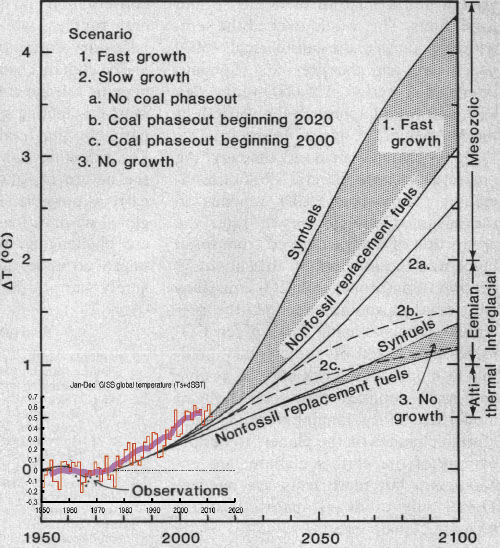Incalculable celebrity of being the 1 generation in 40 million

Putin it to Him: It has taken the young women of Pussy Riot to focus world attention on ex secret-service strongman Vladimir Putin, and his fraudulent hold on the Russian presidency. Pictured is Nadezhda Tolokonnikova, 22-year-old philosophy student and band member. image Vitaly Belousov RIA Novosti
C hances, overall, were nominally 1 in 40.01 million. The chances, that is, of being the generation that held the key to the survival of 40 million generations of human beings.
Earth has existed for 4.54 billion years. Optimistically, the planet will remain habitable for a further 1 billion years, say 40 million generations. The 0.01 million10 000, the number of human generations to date, is of course somewhat spurious, as is the 40 million, given that it is not known with any degree of certainty whether the increasing luminosity of the sun will render life impossible in one billion years time, or in a mere half-billion years.
On the current business-as-usual trajectory, life could be rendered unviable for the bulk of humanity, and for most species, in just a few generations, but certainly before the end of this century, by which time temperatures are projected to be as much as a blistering average 6.4° hotter.
A singular means of deflecting this tragic trajectory is a breeding moratorium, by ‘Generation 10 001’. By 2025, when it is projected to be 8 billion, population could instead have been brought back to about 5 billion. If the planet’s population swells to 10 billion, and it could hit 16, even the most stringent of sustainability regimes will not avert widespread famine. Only by a radical reduction in the number of mouths to feed can the spectre of 10 billion starving be vanquished. But not only is growth demonstrably unsustainable, breeding less is the quickest and cheapest certain means of reducing greenhouse gas emissions. Each additional child multiplies greatly the emissions of the parents:

Dangerous Work: The hazards of wielding a chainsaw sans cut-proof clothing are nothing to those awaiting young women should they take up the challenge of refusing to breed, thereby threatening the wealth of the world’s wealthiest 1%. The activist pictured is a member of feminist group femen, which has charters in 23 countries, although as yet none in Aotearoa or Australia. image MediaMax
Under current conditions in the US, for instance, each child ultimately adds about 9441 metric tons of carbon dioxide to the carbon legacy of an average parent—about 5.7 times the lifetime emissions for which, on average, a person is responsible.
To sheet home responsibility for averting suffering on such an unprecedented scale to a single innocent generation can be seen either as a preposterous imposition, or as a once-in-a-planet’s-lifetime privilege for that generation to be the saviours of humanity and of at least a percentage of biodiversity.
It has never been easier for youth to mobilise. Avaaz, in five and a half years has amassed a global membership of more than 15.5 million. Twitter, begun a year earlier, has half a billion regular users, and Facebook, only two years before that, nearly one billion, which also about the number of smartphone users. Pursuit of celebrity as an end unto itself has been perfected by recent generations. Pursuit of celebrity in pursuit of the ultimate good cause is a potentially potent pairing.
The focus of a breeding moratorium would inevitably be on young women, and young women have long proved adept at attracting mainstream media attention. At the current pinnacle of activism is female rock group Pussy Riot, three members of which have just been sentenced to two years jail—they have already served five months since their arrest for protesting in Moscow’s main cathedral. In an act of solidarity, a member of Ukrainian feminist group femen felled a large cross in Kyiv, with a chainsaw. femen’s genre, topless protest, is a sure-fire media magnet. The group even succeeded in spiking a seedy sex tourism promotion by a radio station in Aotearoa—a bevy of topless ‘brides’ focussed so much opprobrium on its ‘Win a wife’ competition that the winner chose to forego his prize of a return trip for one, 12 nights accommodation and $2000 spending money, rather than face the ‘unhappy ending’ femen promised would await him.

Unhappy Ending: Even New Zealanders involved in sex tourism have been successfully targeted by Ukraine feminist group femen. The recipient of the sleazy radio promotion forewent his winnings when femen promised him an ‘unhappy ending’, should he travel to their country to cash in on his prize. image Kyiv Post
Nudity has long been used to symbolise the vulnerability of Mother Earth. Five years ago 600 activists of all sexes stripped to be photographed lying naked on Switzerland’s longest glacier, presumably for the shortest possible time. This year for the first time, perhaps in the hope it might prevent a repeat installation of mass nudity, the Vatican agreed reverse the prayer intoned for the last 350 years for the, now irreversible, retreat of the Aletsch Glacier. A hundred well-clad pilgrims participated in the service.
Decades of (mostly clothed) protest have failed to impact on the all-powerful fossil-fuel oligarchy. Even if a post-capitalism party was to get itself elected, it is unlikely to withstand the withering assault it would sustain from the massed forces for the status quo. The very next election would be bought and paid for by political party puppets of the world’s rich and ruthless. Every subtle and unsubtle trick in the political manipulation handbook would be employed to denigrate and destroy any party that seriously threatened global vested interests. The current attempt by big tobacco to repackage proposed Australasian plain package legislation as theft of intellectual property is just a whiff of the nefarious deceptions that would be deployed against any party that seriously threatened unfettered capitalism.
The answer lies not, however, in small local scale green initiatives, as satisfying as these may be for adherents. Such initiatives simply marginalise the opposition and permit corporates to continue to wield the whip hand, allowing it free rein to fuel runaway global warming. A breeding moratorium, on the other hand, would choke off the growth upon which big business is wholly dependent. Coupled with a global democracy institution capable of landing blows in the form of surgically targeted global boycotts on intractable corporates, the balance of power worldwide, perhaps for the first time in the history of civilisation, could be secured by the people, for the people, for the planet.

Doesn’t Stand a Prayer: Aletsch Glacier, after 350 years of prayer for its retreat, is now being prayed for, and with the Pope’s blessing. The accelerating, cumulative mass balance loss from the world’s glaciers of the last 30 years is the ‘equivalent to cutting a 15 m thick slice off the top of the average glacier’—suspending 600 subjects 15 metres above the glacier, à la Amsterdam’s ‘invisible bridge’, too logistically challenging even for indomitable installation artist Spencer Tunick. photographer Spencer Tunick
Power is the key component. Only through the exercise of real democratic power will young people be persuaded to engage in governance. And older people re-engage—participatory democracy has long since largely become a cruel and cynical means by which the state can neutralise the honest efforts of the populace to influence policies. Because instances of existing power structures voluntarily fully democratising will remain rare, the people have no choice but to exercise their power unilaterally. This, in theory at least, would be relatively easily achieved using the ancient weapon of boycott, but on a global scale.
In the first instance, rather than the traditional negative boycott, what should be attempted on a global scale is the positive boycott, or buycott. While buycotts have mostly been used by reactionaries, famously in the United States in an attempt to counter the boycott of Israeli goods, the first was suggested 21 years ago in support of Pfizer and S C Johnson and Sons, sponsors of Sunday Dinner, a short-lived sitcom by left-wing television writer Norman Milton.
The perfect opportunity for a global buycott is looming with generic pharmaceutical giant Mylan’s bid to market a generic version of the highly profitable Generess Fe oral contraceptive. Mylan currently produces the least expensive fixed-dose-combination drug for treating HIV. A global buycott by women of its oral contraceptive could help Mylan make it cost-effective for the government of South Africa to switch from less-effective treatments involving three separate tablets, to more efficacious but currently four times more expensive single-tablet alternative. Mylan’s fixed-dose-combination drug is only fractionally more expensive than the cheapest three-dose option, of which it is also the supplier. With six million South Africans infected, 17% of the world’s HIV-positive, the potential for alleviation of adult suffering and the infection of infants is tremendous.

Naked Facts: Global temperature rise is running slightly higher than Dr James Hansen’s 1981 worst-case projections. Average temperature increases of more than 4° will render much of the planet uninhabitable—even a pre-Industrial Revolution population of 0.7 billion would struggle for resources. In 1981, the population was 4.5 billion—about what it could be again by 2025, when it will otherwise be a whopping 8 billion, with the help of ‘Generation 10 001’. chart Hansen et al, 1981 and RealClimate
In the manner of gifting goats and other livestock à la Oxfam, the global buycott could also be supported by people who are not consumers of oral contraceptives. The well-off and relatively well off could choose to ‘give’ their hard-to-buy-for friends-with-everything a month or a year’s supply of Mylan’s fixed-dose combination antiretroviral drug. If global support for Mylan failed to convince the South African government to overrule the restraint-of-trade held over Mylan by its rival Aspen Pharma, the latter could be targeted with a good old-fashioned boycott, for example of its undoubtedly indecently profitable Cool Charm body spray product. With every buycott, a corresponding boycott would be implicit, but invoked only as the last resort.
Once ‘Generation 10 001’ broke through the billion-member barrier, on the back of its breeding moratorium and buycott notoriety, it could convincingly participate in the constitution of a global democracy. If adopted as the cause célèbre by Avaaz, Generation 10 001 could be millions strong within weeks, and the impact on population growth could register within a year.
The sustainable human population of Earth, allowing halfway decently for the 8.7 million or more other species, is possibly about 2.7 billion—a third of what it is today. A breeding moratorium is the all-round best shot humans have of preventing runaway global warming, if indeed it is not already too late for that.
One generation, Generation 10 001, holds the key to survival.
